Don't wanna be here? Send us removal request.
Text
How to Choose and Use 3D Printer Filament
Introduction: In the realm of 3D printing, the choice of 3d filament can significantly impact the quality and characteristics of your printed objects. Understanding the different types of 3D printer filament is essential for achieving the desired results. This blog aims to provide a detailed overview of various 3d printing filament options available in the market, helping you make informed decisions for your 3D printing projects.
Understanding 3D Printer Filament
3D printer filament is the material used for 3D printing, typically in the form of spools or coils. It is fed into the 3D printer, melted, and extruded layer by layer to create three-dimensional objects. 3D printing filaments come in a wide range of materials, each with its unique properties and applications.
Types of 3D Printer Filament
PLA (Polylactic Acid): PLA filament is one of the most popular choices among 3D printing enthusiasts. It is derived from renewable resources such as cornstarch or sugarcane and is biodegradable. PLA is known for its ease of use, low warp, and vibrant colors, making it suitable for a wide range of applications, including prototyping, hobbyist projects, and educational purposes.
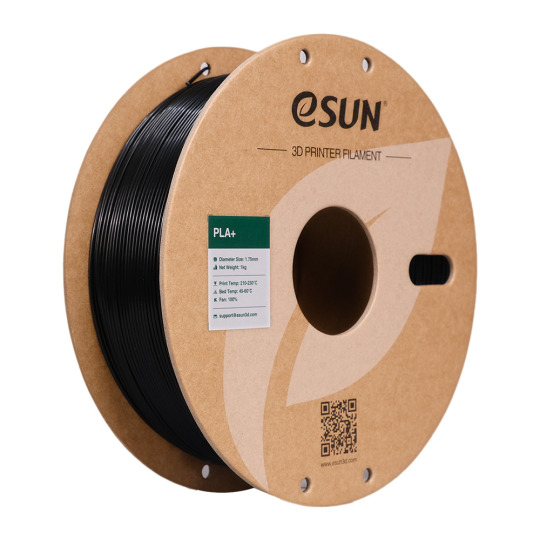
ABS (Acrylonitrile Butadiene Styrene): ABS filament is valued for its durability and impact resistance. It has a higher melting point compared to PLA, making it suitable for functional prototypes, mechanical parts, and objects requiring higher temperature resistance. However, ABS can be prone to warping during printing, requiring a heated bed and enclosed printing environment for optimal results.

PETG (Polyethylene Terephthalate Glycol): PETG filament combines the best features of PLA and ABS. It offers excellent layer adhesion, strength, and flexibility while being easy to print like PLA. PETG is commonly used for functional parts, mechanical components, and food-safe containers due to its durability and chemical resistance.

Tips for Choosing the Right Filament
When selecting a filament for your 3D printing project, consider factors such as material properties, printing temperature, bed adhesion, and post-processing requirements. Assess your project's specific needs and choose the 3d printing filament that best suits your requirements for strength, flexibility, and surface finish.
Conclusion: In conclusion, the choice of 3d printing filament plays a crucial role in determining the success of your 3D printing projects. By understanding the characteristics of different 3D printer filament types and their applications, you can make informed decisions to achieve optimal results. Whether you're a hobbyist, educator, or professional, exploring the world of 3D filament opens up endless possibilities for creativity and innovation.
Closing: We hope this guide has provided valuable insights into the world of 3D printer filament. For more information or assistance with your 3D printing needs, feel free to reach out to us. Happy printing!
0 notes
Text
Is eSUN PLA+ filament worth buying?
Determining whether eSUN PLA+ is worth buying depends on your specific needs and preferences for 3D printing. Here are some factors to consider:
Print Quality: eSUN PLA Plus filament is generally known for producing high-quality prints with good layer adhesion and low warping. If print quality is a top priority for you, PLA Plus may be a good choice.
Ease of Printing: PLA Pro is often praised for its ease of printing. If you're a beginner or want a filament that works well on a variety of 3D printers, eSUN PLA+ filament might be a good option.
Strength and Durability: PLA Plus is designed to be stronger and more durable than regular PLA. If you need 3D prints with improved mechanical properties, such as higher impact resistance, eSUN PLA Pro filament could be a suitable choice.
Color Options: eSUN PLA+ is available in a variety of colors, allowing you to choose the one that best suits your project.
Price: Consider the cost of the filament in comparison to your budget. While eSUN PLA Plus filament is often reasonably priced, the cost can vary depending on your location and supplier.
User Reviews: Check recent user reviews and feedback to see how other 3D printing enthusiasts have experienced eSUN PLA Pro filament. This can provide valuable insights into its performance.
Remember that individual preferences and printing conditions can vary, so what works well for one person may not be the same for another. If you find positive reviews aligning with your specific requirements and budget, eSUN PLA+ filament could be worth trying. Conversely, if there are consistent negative reviews highlighting issues that are important to you, you might want to explore alternative filament options.
0 notes
Text
How to choose 3D printing materials?
Choosing between filament and resin for 3D printing materials depends on various factors, including the specific requirements of your project. Here are some considerations to help you decide between the two:
3D Printer Filament:
Strength and Durability: Filaments like ABS, PETG, or nylon generally offer higher strength and durability compared to most resin-based 3d printing materials. If your project requires robust mechanical properties or impact resistance, filament-based printing might be preferable.
Cost: Filaments are generally more cost-effective compared to 3d printer resin. Filament-based printers are often more affordable, and 3d printer filaments themselves tend to have a lower price per unit of volume. If budget is a significant concern, filament-based printing may be the more economical option.
Ease of Use: Filament-based 3D printers are generally easier to set up and operate, making them more beginner-friendly. Filament printing typically requires fewer technical adjustments and considerations, such as resin handling and post-processing requirements.

Availability and Variety: 3D printing filaments are widely available in a range of materials, colors, and finishes. You can find filament options suitable for various applications, including flexible filaments, composite 3d printer filaments, and specialty 3d printing materials. The extensive variety of 3d printing filaments allows for greater flexibility in material selection.
Size and Scale: If you plan to print larger objects or require a larger print volume, filament-based printers are generally better suited for such projects. Resin printers typically have a smaller build volume and may not be suitable for large-scale prints.
3D Printer Resin:
High Detail and Precision: Resin-based printing, such as Stereolithography (SLA) or Digital Light Processing (DLP), offers exceptional detail and precision. If your project involves intricate designs, small parts, or high-resolution models, resin printing is often the preferred choice.
Smooth Surface Finish: Resin prints typically result in smoother surface finishes compared to filament-based prints. If your project requires a high-quality surface finish, such as for artistic or display purposes, 3d printer resin printing can provide superior results.
Material Properties: Resin 3d printing materials can offer unique properties not commonly found in 3d printer filaments. For example, there are resin options with exceptional transparency, high temperature resistance, or flexible characteristics. If your project demands specific material properties that are best achieved with resin, it may be the preferred option.

Post-Processing: Resin prints generally require post-processing steps, such as rinsing in a solvent, curing under UV light, and additional support removal. These additional steps can add complexity and time to the printing process.
Safety Considerations: Resin printing involves the use of liquid resins that may emit strong odors or potentially hazardous fumes. Adequate ventilation and appropriate safety measures should be taken when working with resin-based printers.
Ultimately, the choice between 3d printer filament and 3d printer resin depends on your project requirements, budget, desired level of detail, and available equipment. Consider these factors carefully to determine which 3d printing materials best align with your specific needs.
0 notes
Text
What is the difference between PLA and PLA+ filament?
PLA (Polylactic Acid) and PLA+ (PLA Plus) are both types of 3D printer filament commonly used in the field of additive manufacturing. While they share similarities, there are a few key differences between the two.
Material Composition: PLA and PLA+ are both derived from renewable resources, typically made from corn starch or sugarcane. However, PLA+ filament incorporates additives or modifiers to enhance its properties compared to standard PLA.
Strength and Durability: PLA+ filament is generally stronger and more durable than standard PLA filament. The addition of modifiers, such as impact modifiers or heat-resistant agents, improves the material's resistance to impact, bending, and deformation. This increased strength allows for more robust prints, reducing the likelihood of breakage.
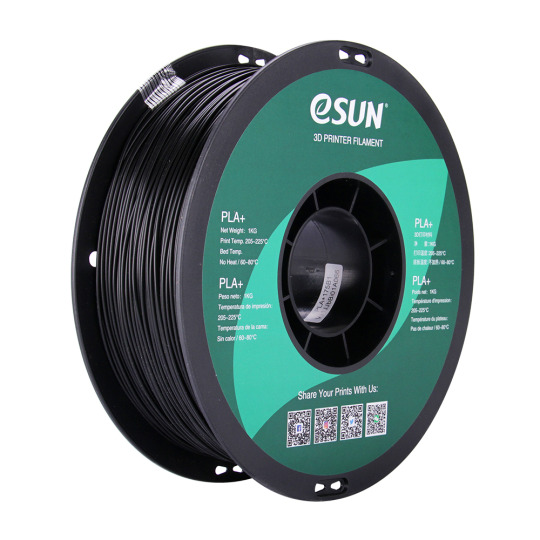
Printing Temperature: PLA+ typically has a higher printing temperature compared to standard PLA. While PLA filamentusually prints well around 190-220°C, PLA+ filament usually requires a slightly higher temperature range, typically around 210-235°C. It's essential to adjust the printing settings accordingly when switching between the two 3D printer filaments.
Surface Finish: PLA+ filament often provides a smoother surface finish compared to standard PLA filament. The improved flow characteristics of PLA+ during printing contribute to reduced visible layer lines and improved aesthetic quality in the final prints.
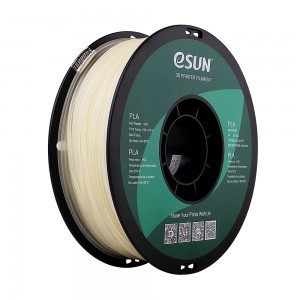
Ease of Printing: PLA+ filament is generally considered slightly more challenging to print compared to standard PLA filament. Its increased strength and higher printing temperature may require more precise calibration of the 3D printer and adjustments to print settings to achieve optimal results. However, with the right adjustments, PLA+ can still be printed reliably on most consumer-grade 3D printers.
It's worth noting that different manufacturers may have variations in their PLA+ formulations, so specific properties and characteristics can vary between different brands. It's always a good idea to consult the manufacturer's recommendations and guidelines for each 3D printer filament to ensure optimal print settings and results.
0 notes
Text
Is TPU better than PLA?
Whether TPU is better than PLA or vice versa depends on the specific requirements of your project and the properties you are looking for in a 3D printer filament. Here are some key points to consider when comparing TPU and PLA:
Flexibility: TPU filament is known for its flexibility and elasticity, allowing for the production of objects that can bend and stretch without breaking. PLA filament, on the other hand, is a more rigid filament and lacks the same level of flexibility.
Impact resistance: TPU is generally more impact-resistant than PLA. TPU 3D printer filament can withstand impacts and deformation without cracking or breaking, making it suitable for applications that require durability and resilience.
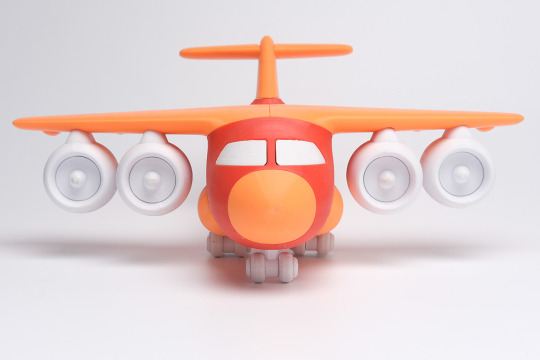
Printability: PLA filament is generally considered easier to print with compared to TPU. PLA has a lower printing temperature, less warping, and requires fewer adjustments to the printer settings. TPU filament, on the other hand, requires more precise settings due to its flexible nature, making it more challenging to print with.
Strength: When it comes to tensile strength, PLA is typically stronger than TPU. PLA exhibits higher rigidity and can handle greater tensile forces before deforming or breaking. TPU, while not as strong, offers superior elongation at break, meaning it can stretch further before rupturing.

Ultimately, the choice between TPU and PLA depends on the specific requirements of your project. If you need flexibility, impact resistance, and durability, TPU filament is a better option. However, if you prioritize ease of printing and rigidity, PLA filament may be more suitable.
0 notes
Text
What is wood filament?
Wood filament is a type of 3D printer filament that contains actual wood particles or fibers mixed with a base material such as PLA (polylactic acid). The wood particles give the printed objects a unique wood-like texture and appearance, and can also add a natural wood scent to the printed item.

Wood filament is a popular choice for printing objects that require a natural or rustic appearance, such as decorative items, toys, and furniture components. It can also be sanded, stained, and finished just like real wood, making it a versatile material for a wide range of applications. However, it should be noted that wood pla filament can be more difficult to print with than traditional 3D printer filaments due to its tendency to clog nozzles and the need for specific printing settings to prevent warping and cracking.
Wood filament has a wood-like appearance effect, and the surface is matte and delicate without layering.This wood pla filament is a PLA based 3D printer filament,which has the characteristics of easy to print and smooth surface as pla filament.
Wood filament tilize active foaming technology to achieve like-wood appearance with low-density PLA of 0.7g/cm3.eSUN wood pla filament is made with virgin materials, biodegradable and eco-friendly, non-toxic and low odor.
0 notes
Text
What is 3d printer filament?
3D filament is the material used by 3D printers to create physical objects. 3D printer filament is a long and thin strand of material that is fed into the printer's extruder and melted to create a 3D object layer by layer. 3D Filament is available in a variety of materials, such as PLA filament, ABS filament, PETG filament, TPU filament,ASA filament , and many others, each with their own properties and characteristics.
What are the popular 3d printer filament types?
PLA (Polylactic Acid): PLA filament is a biodegradable thermoplastic material made from renewable resources such as corn starch or sugarcane. It is one of the most popular 3d printer filament types for 3D printing due to its ease of use and versatility. PLA filament can produce detailed and high-quality prints with a glossy finish.
ABS (Acrylonitrile Butadiene Styrene): ABS filament is a strong, durable, and impact-resistant thermoplastic material. It is commonly used in automotive parts, toys, and household appliances. ABS filament is a popular choice for 3D printing due to its high strength and toughness.
PETG (Polyethylene Terephthalate Glycol): PETG filament is a strong and flexible material that is resistant to impact and UV radiation. It is commonly used in the production of water bottles, food containers, and medical equipment. PETG filament is a popular choice for 3D printing because of its ease of use and durability.
TPU (Thermoplastic Polyurethane): TPU filament is a flexible and rubber-like material that is commonly used in the production of phone cases, shoe soles, and other flexible objects. TPU filament is a popular choice for 3D printing because of its flexibility, durability, and ability to create objects with complex shapes.
ASA (Acrylonitrile Styrene Acrylate): ASA filament is a weather-resistant thermoplastic material that is commonly used in outdoor applications. ASA filament is a popular choice for 3D printing because of its ability to withstand UV radiation, moisture, and heat.
Overall, choosing the right 3D printer filament for your 3D printing project requires a balance of the desired properties, printability, and cost. Experimenting with different materials can help you find the best 3D filament for your specific application.
0 notes
Text

eSUN will be exhibiting at RAPID + TCT 2023
May, 2023 - eSUN, a pioneer in the 3D printing materials industry, will be exhibiting at RAPID + TCT 2023 exhibition. The eSUN company, established in 2002, is dedicated to the industrialization of environmentally friendly materials and leads the market in 3D printer filament, 3D printer resin and accessories.
Visitors to RAPID + TCT are invited to experience eSUN's latest innovations at booth 5237. The company will showcase several groundbreaking products, including ePLA-HF (Fast printing PLA filament series)and PW100 PLA Water Washable Resin(Bio-based 3D printer resin). These offerings exemplify eSUN's commitment to providing high-quality, sustainable materials for a variety of applications.
As a global leader in the 3D printing materials market, eSUN's products are sold in over 80 countries and regions. eSUN has mastered the production technology of various 3D printing materials, including PLA, PCL, ABS, and PETG. Their 3D printer filament offers excellent printability, high-speed printing, and a smooth surface finish with low shrinkage. eSUN's PLA filament is FDA-certified, ensuring a safe and environmentally friendly product. The company also offers a range of 3D printer resins that utilize photopolymerization for precise and detailed printing.
Don't miss the opportunity to discover eSUN's innovative 3D printing solutions first-hand at booth 5237 during the RAPID + TCT 2023 exhibition.
0 notes
Text
How to dispose of 3d printer resin?
Liquid photosensitive resin is the main material for 3D printing. The photosensitive 3D printer resin is uv resin, which immediately causes polymerization reaction and completes curing under the irradiation of ultraviolet light of a certain wavelength. Compared with FDM printer wire, photosensitive resin has higher precision, smooth surface and less lines, and very strong plasticity.
Photosensitive resins are widely used and there are many types. For example, we have standard resin, water washable resin, dental resin, engineering resin, and jewelry casting resin.
Since resin is a liquid material that is slightly toxic in itself, we need to handle it safely in 3D printing.
How to clean 3D printer resin?
Make sure you wear gloves, goggles, etc. when pouring resin into the bucket, or when you need to add more resin during the printing process.
Expose the resin print to sunlight (or other UV light) until fully cured. If you want to throw away a product that failed to print, be sure to cure it first. After curing, the resin is no longer hazardous. Never pour resin down the drain as it can damage pipes and even the environment.
After printing, the molded parts need to be cleaned several times with alcohol to ensure that there is no sticky liquid resin on the surface.
Summary: When printing with 3D printer resin, be sure to wear gloves and other protective tools; after printing, you can use alcohol to clean the uncured resin; before discarding the resin, please perform post-curing treatment. If you want to save time on cleaning, then water washable resin will be a good choice. eSUN's WO100 Water-Washable Ortho Model Resin is used as a dental resin with safe ingredients, high precision, and washable.
0 notes
Text
Types of 3D printer filaments and analysis of influencing factors
3D printing technology is gradually applied in many fields, and the corresponding 3D printer filaments are also increasing. For example, understanding different types of 3D printing filaments and their influencing factors is of great significance for selecting suitable 3d filaments and improving printing quality.

1. Types of 3D printer filaments
The types of 3D printing filaments include plastics, metals, biologicals, ceramics, and hybrids, among which plastics are the most common choices, such as Acrylnitrole Butadiene Styrene (ABS), Polylactic Acid (PLA), Polyethylene Terephthalate Glycol (PETG). These plastics have different properties. For example, ABS filament has high toughness and impact resistance, while PLA filament has the advantages of easy printing and environmental protection.
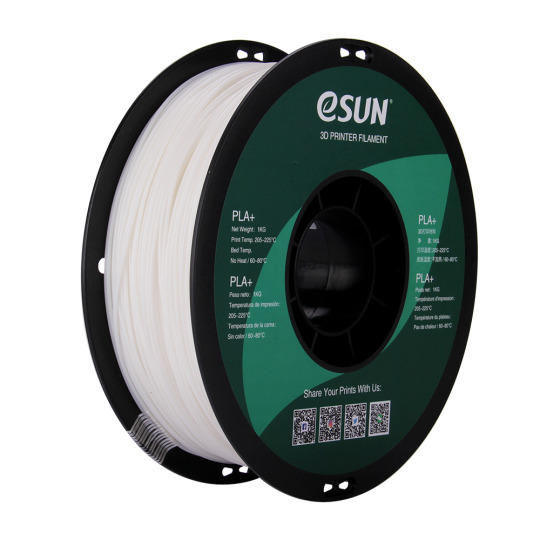
2. Factors affecting 3D printer filaments
The factors affecting 3D printing filaments are mainly divided into two aspects, one is the printer hardware factor, and the other is the printing object factor. In terms of hardware, influencing factors include nozzle width and height, temperature, ambient temperature, etc.; in terms of printing objects, influencing factors include printing speed, shape, size, design process, etc.
3. The method of optimizing 3D printer filaments
Optimizing the 3D printing filaments and the hardware factors of the printer can achieve better printing results. The optimization scheme includes adjusting the printing temperature and ambient temperature, adjusting the position and height of the nozzle, appropriately reducing the speed during printing, and adjusting the angle and direction of printing, etc.
4. 3D printer filaments market analysis
The 3d printing materials market has been expnding in recent years, with a market value of US$2.8 billion in 2020, and is expected to double in the next few years. Plastics occupy a dominant position in the 3D filaments market, and it is expected that the subsequent market share will continue to increase. In the rapid development of the 3D printing market, the analysis and research of the types of 3D printing filaments and influencing factors are particularly important. To optimize the coordination of 3D printing materials and printer hardware factors, it is also necessary to constantly pay attention to the trend of the 3D printer filaments market.
0 notes
Text
What should be paid attention to when choosing 3d printer filament?
Some high-performance and strong 3d printer filaments require high-temperature printing, which means that not all desktop devices can use these 3d printing materials to make parts. However, the equipment selected for printing and the skill of the owner/operator play an important role in determining the finished product, including:

1. Item Strength - There are a number of factors that can help or damage a strong and reliable material and print structure. Too low or too high a temperature, insufficient cooling or standing, can make even filaments like PET, ABS and Ultem brittle, split, warp or twist. In addition to 3d printing materials that can withstand stress, under adverse printing conditions, the 3d printer filaments cannot be tightly bound together and the printing will fail.
2. Surface quality – In addition to temperature, there are also cutting settings, nozzle types, and machine configurations (such as material delivery type and speed), which if not set correctly can result in discoloration, spotting, and rough surfaces.
3. Dimensional Accuracy - All 3d printing materials can print inaccurately, however, such as TPU, Nylon and other flexible materials are more difficult to control. The heated material falls perfectly but the first layer cools during the print and may start to shrink, wrinkle, causing further distortion and inaccurate parts.
Also, it should be noted that almost all 3d printing materials mentioned can be manufactured by multiple manufacturers and have different properties and compositions. For example, a standard ABS cannot be made from 3 monomers in different proportions - so depending on the concentration of each of them, it can be precise and strong or smelly and rotten.
Some extra factors added to the 3d printer filament can improve its performance and because of many factors FDM prints better. There is no one-size-fits-all material, so you need to choose the material filament according to your needs.
0 notes
Text
How to solve the problem of wire drawing in 3D printing?
Obvious wire drawing appears when printing is idling.
Material: The 3d printer filament absorbs water and leads to drawing during printing, so it should be dried before printing according to different 3d printing materials(PVA, PA, TPU, PC, PEEK).
Printing: Easy-absorbent 3d printer filaments can be printed directly in the air. During the printing process, it should be equipped with a sealed material box, such as eBOX.
Slicing: Retraction distance and retraction compensation are set correctly, retraction distance is too high and it is easy to lack of material, too low and easy to draw; path optimization, it is recommended to open the start point alignment function when slicing, close the retraction Z-axis lift, avoid going through the shell when empty range of motion, optimize the slicing printing path, and appropriately reduce the printing speed to achieve the best printing effect, which is of great help to the 3d printer filaments with high viscosity and easy to draw like PETG.
Temperature: the higher the printing temperature, the easier it is for wire drawing, it is recommended to reduce the printing temperature to ease the wire drawing
0 notes
Text
What is the difference between PLA and PLA+?
In the field of 3D printing, PLA filament is a commonly used 3D printing material, which is suitable for FDM printing. Because PLA is an environmentally friendly material, many 3D printing material manufacturers have studied different formulas to improve and upgrade PLA, among which eSUN PLA+ filament is the most famous. So PLA vs PLA+, what is the difference between them?
Firstly, introduce two 3D printing materials respectively:
PLA is an environmentally friendly material that is easy to print and has a smooth surface. Compared with ABS, PLA filament does not need to close the cavity, has low shrinkage, does not warp, does not crack, and can print large-scale models; PLA do not have irritating odors when printing, and are safe and environmentally friendly. eSUN PLA filament has passed FDA certification and is safer to use; PLA can be used for early concept models, rapid prototyping, and metal parts casting.

PLA+ is based on the modification of PLA material, which has the characteristics of easy printing of PLA, and also improves the toughness and interlayer bonding force. PLA+ filament is an environmentally friendly material, easy to print, and the surface of the printed part is smooth; PLA+ has a balanced strength, rigidity, toughness, and strong impact resistance, which is very suitable for printing functional parts;

What are the advantages of PLA+?
Compared with traditional PLA wire, PLA+ has high toughness, high impact resistance, and the wire is not easy to be brittle. Due to the excellent printing performance, PLA+ has a wider range of applications, suitable for machinery, electronic appliances cars etc.
eSUN PLA+ filament is one of the most popular 3D printing materials, welcome all makers to use it to develop their creativity!
0 notes
Video
youtube
BUILDING an AMAZING DC-6/DC-7 Airliner | Full DIY Build & Flight
1 note
·
View note
Text
0 notes
Text
What kind of materials can 3D printers use?

3D printers can print anything, but what 3D printing materials can be used is a question.
What is the material of the 3D printer?
What are 3D printer materials? It's a bit like 2D printer ink. A 3D object is formed by layering and solidifying 3D printing materials. 3D printers can use a variety of materials, but there are different types of 3D printer materials that can be used with each printing method.
In the Fused Deposition Modeling (FDM) method, a material called a filament is used.3D printer filament is a long, thin strand of meltable resin.
In the case of stereolithography (SLA method/DLP method) or inkjet method (material injection method), 3d printer resin cured by ultraviolet rays is used.
In the case of the powder sintering method (SLS method) or the binder jetting method, powder materials are used. do it. In addition to resin, various powder materials such as metal powder and gypsum can be used.
According to your printer type and printing method, choose the appropriate 3D printing materials.
0 notes
Text
Why like water washable resin?
The water washable resin supports water washing, which can directly save the alcohol cleaning step, greatly shorten the post-processing time, and improve the printing efficiency. This type of photosensitive 3d printer resin also has the characteristics of high molding precision, high resolution, smooth printing surface, clearly visible printing details, balanced strength, toughness, rigidity and other mechanical properties. Due to this kind of3d printing materials' low viscosity, good fluidity, high demolding success rate and easy printing.
1. The application of eSUN water washable resin in the production of animated character models
Taking the application of model dolls as an example, eSUN has established a cooperative relationship with Black Forge Game, a local board game company in New Zealand. Black Forge Games needed a durable, brittle-resistant, high-precision photosensitive3d printer resinto print cost-effective numbers.
After testing a variety of conventional photosensitive 3d printing materials on the market, Blackforging Games believes that the eSUN grey water washable resin has very good printing results. Using water instead of alcohol makes it easier to clean model surfaces and helps reduce printing costs. At the same time, the printed model can also show the details to the greatest extent.
2. Performance parameters and printing precautions of eSUN water washable resin
Warm reminder, the photosensitive 3d printer resin needs to be shaken well before printing, and thewater washable resincannot be washed for a long time. The water washable 3d printing materials can clean for tens of seconds to a minute. After cleaning, it is best to dry it with a hair dryer in time. When storing, be careful not to place it in a humid and high temperature environment.
0 notes